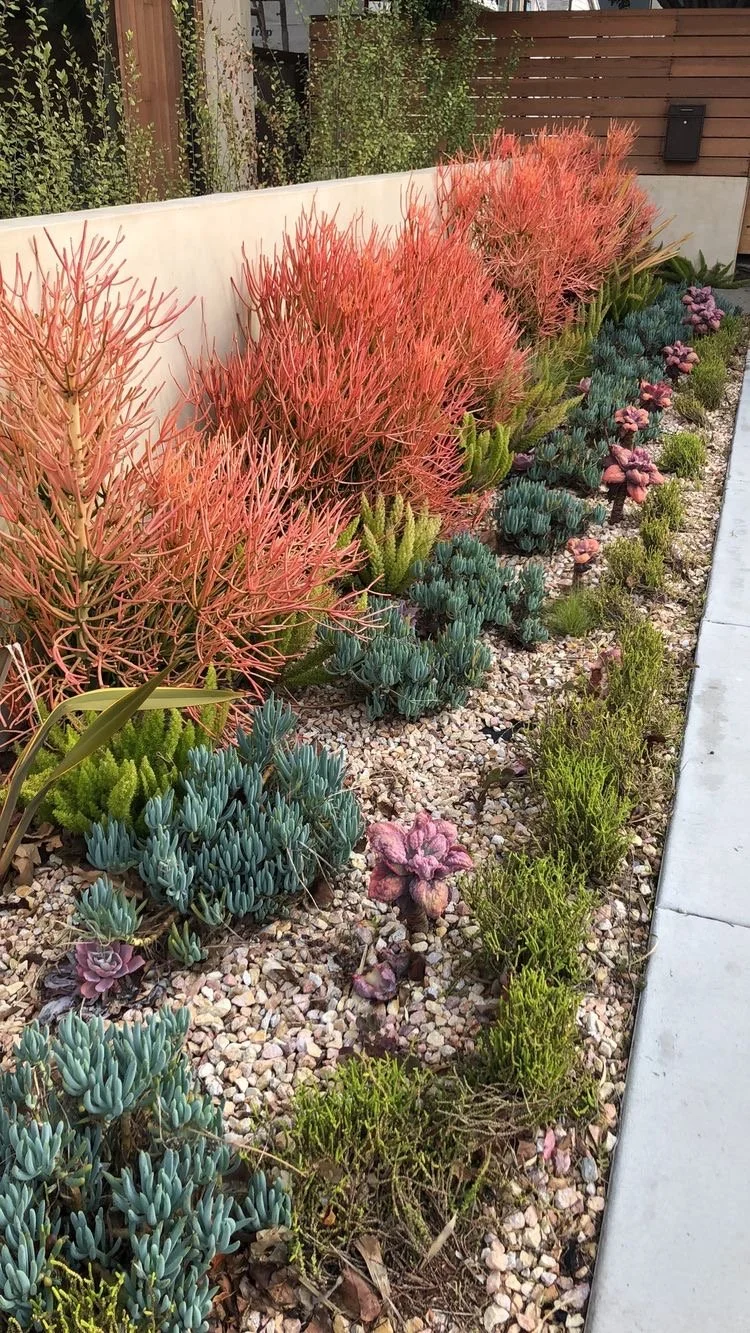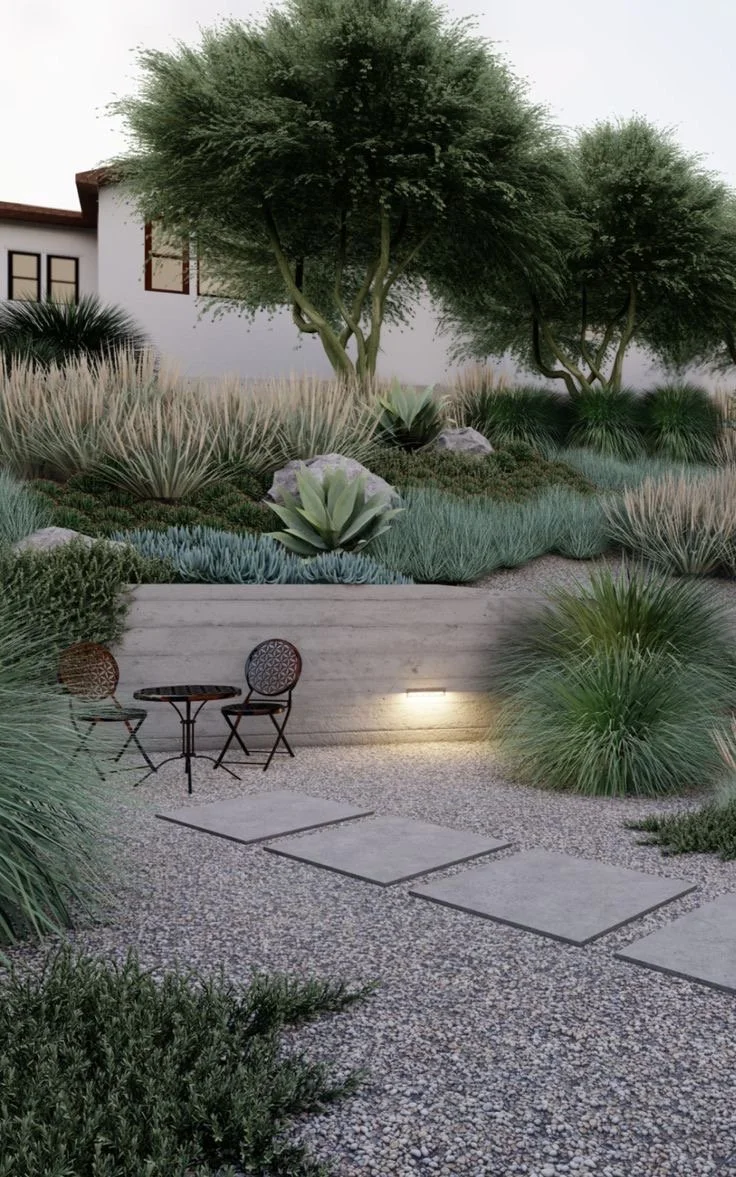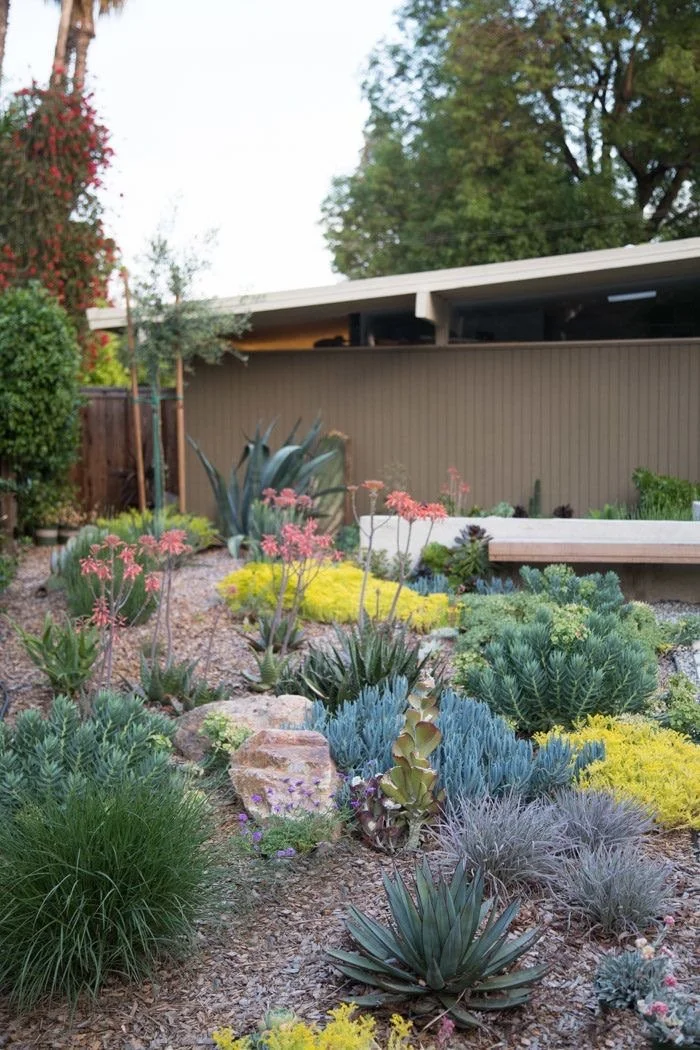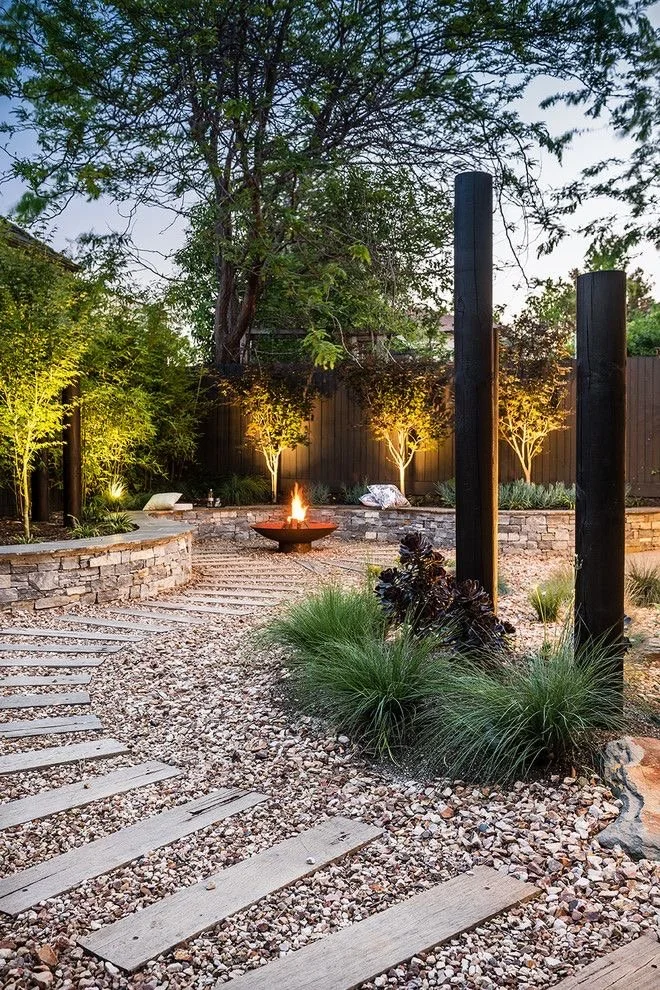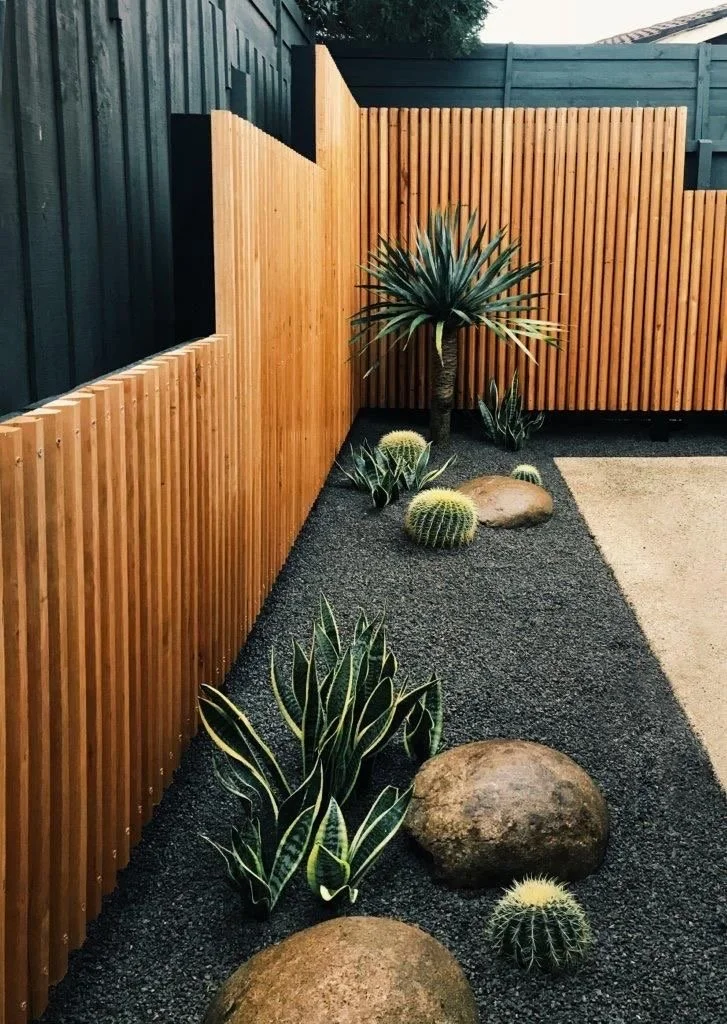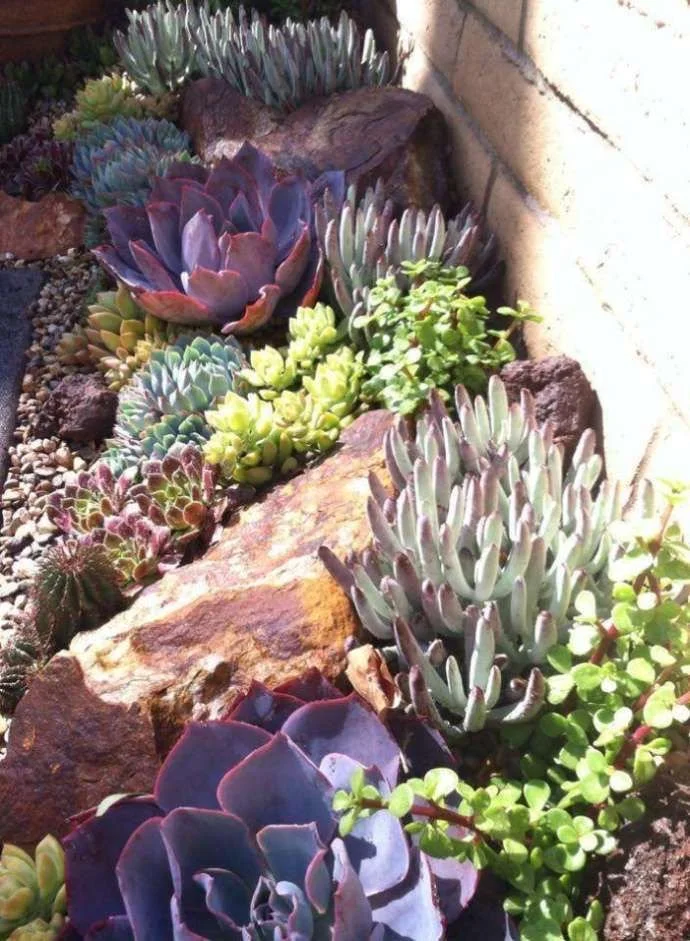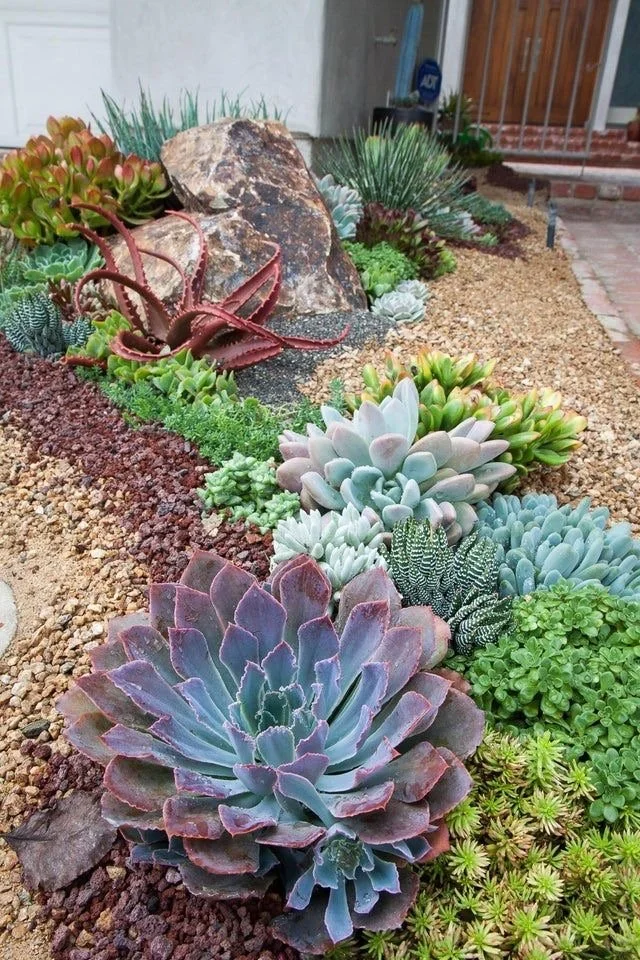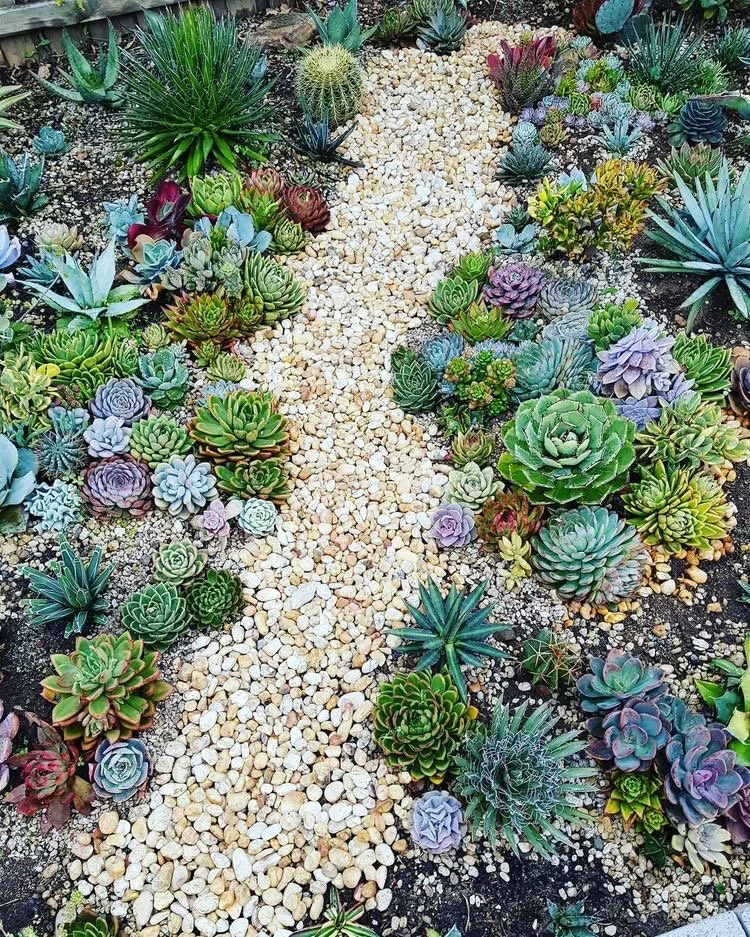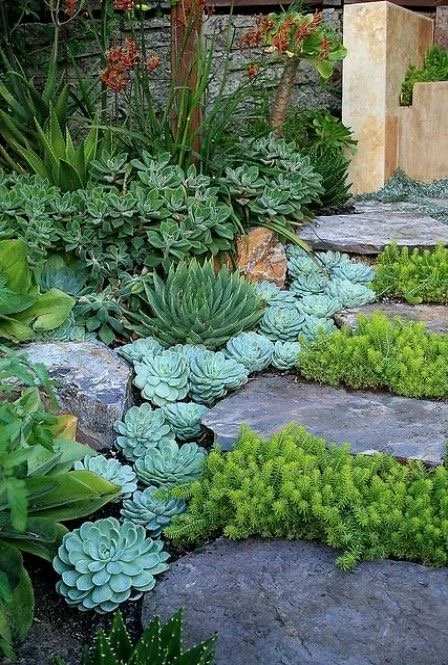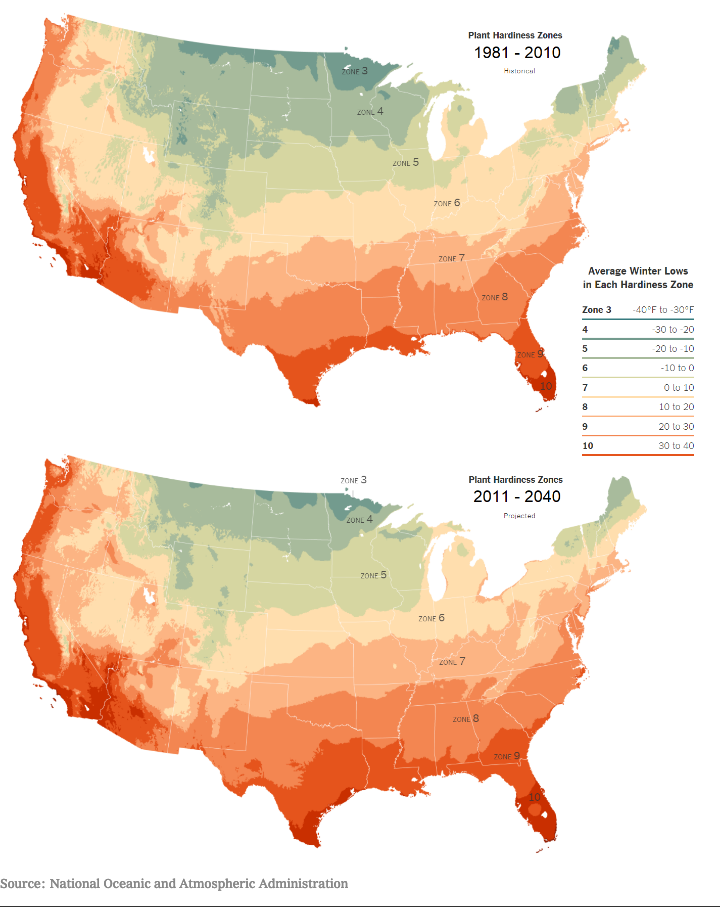Modern Xeriscape. The Secret to Low Maintenance Landscaping
Hennai Home Xeriscape Original
When we moved into our home, I knew that I didn’t want to spend a ton of time every single year doing a ton of yard maintenance. It’s not that I don’t enjoy it, I just don’t want it to rule my life.
Growing up in the Midwest I did a decent amount of yard work as a kid, pulled weeds, helped spread mulch, regularly cut back a wisteria vine that never did bloom after a million years. I didn’t give much thought about if I enjoyed it, it was just what we did.
It wasn’t until I moved to the bay area where I discovered that I did like plants! It turns out that a boxwood hedge and geraniums never quite did it for me, I needed some weird and wild plants that when put in the right climate, didn't require a whole lot of care to thrive. Now that I am writing this, I am realizing in real time, that shit, I am those plants. I just needed to find a place to thrive, and I have and it feels like home.
Modern Xeriscape Design Inspiration
Image sources listed when known, please reach out if you know the sources so I can update where credit is due.
What is xeriscaping?
At its simplest form, Xeriscaping is creating a natural landscape that is easily maintained and requires little to no water.
It doesn’t mean that it will be barren and boring. With some decent planning you can avoid spending the first 6 weeks of the warmer weather doing non-stop yard work, hoping to finish with enough time to enjoy the yard before it gets cold again. You also don’t then need to pass that work off to someone else and just pay a weekly service either. Your money can be doing other things for you.
In general it seems that once someone buys a house they are always surprised by the maintenance and then get stressed out and then just start paying someone else to deal with it. It doesn’t need to be that way. Trust me! It’s worth doing your research on things like groundcover and plants to actually be able to enjoy your yard without paying a ton of money every.single.year.
How to get started with xeriscaping?
Get to know your zone, and how it is changing. Once you know your zone, you can decide if you want to have some plants that live outside during the summer, but they get moved inside during the winter. In terms of low maintenance and hitting your xeriscape goals, stick with perennial plants that will always work in your zone.
Among the most important factors determining which plants will thrive in a given location is how cold the winter is. According to research written in The New York Times, based on an analysis by the National Oceanic and Atmospheric Administration, “As temperatures warm across America, growing zones for flowers, shrubs, and trees are shifting northward.” So, as you start seeing more and more plants in your area that you’ve never seen before, it’s because it’s getting warmer.
According to this projection, my parents will eventually be able to start planting things that normally did well in Northern Texas, and Alabama at their home in Cleveland.
Source: NYT
What are the benefits of xeriscaping?
Depending on where you are located the types of plants that will do well in your area for xeriscaping will be different.
Here are the benefits of xeriscaping in zones 7, 8, 9, and 10 that make up the majority of the arid South & Western parts of the US.
Water Conservation - Reduce unnecessary use of natural resources
This saves you money and our natural resources. According to Water Sense, “The average American family uses 320 gallons of water per day, about 30 percent of which is devoted to outdoor uses. More than half of that outdoor water is used for watering lawns and gardens. Nationwide, landscape irrigation is estimated to account for nearly one-third of all residential water use, totaling nearly 9 billion gallons per day.” For those in warmer climates, outdoor use can be upwards of 60%
Supporting Local Wildlife
Oftentimes the plants that do well in a given environment are native plants, these plants are naturally built into the ecosystem and help sustain local birds, bugs and wildlife and in turn they help pollinate and support the plants.
Creating Defensible Space for Fire Protection - Planning for increasing effects of climate change
Using stones, rocks and high moisture plants that grow close to the ground are another benefit of thoughtful planning and xeriscaping. Fire resistant plants are great because they are often drought tolerant too. Choose fire-retardant plant species that resist ignition such as rockrose, ice plant and aloe.
Saving Money
Many of the plants that do well in Xeriscape environments are also insanely easy to propagate. I bought one 10” aloe plant, and 2 years later that has given me 20+ pups that are now all over my yard.
Low Maintenance
Don’t get me wrong, it’s a lot of work up front, but the ongoing maintenance is so much better. We did a ton of rocks, so we aren’t ordering 8 yards of mulch to lay out every single year.


